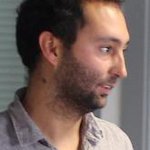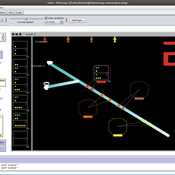
Bruno Bonté
Affiliations Professional homepage ORCID more infohttps://orcid.org/0000-0002-7325-0495
GitHub more info
Master Degree
I discovered at the same time Agent-Based Modeling method and Companion Modelling approach during my master degrees (engeenering and artificial intelligence and decision) internship at CIRAD in 2005 and 2006 where I had the opportunity to participate as a modeller to a ComMod process (Farolfi et al., 2010).
PhD
Then, during my PhD in computer Science applied to Modeling and Simulation, I learned the Theory of Modeling and Simulation and the Discrete EVent System specification formalism and proposed a conceptual, formal and operational framework to evaluate simulation models based on the way models are used instead of their ability to reproduce the target system behavior (Bonté et al., 2012). Applied to the surveillance of Epidemics, this work was rather theoritical but very educative and structuring to formulate my further models and research questions about modeling and simulation.
Post-Doc
From 2011 to 2013, I worked on viability theory applied to forest management at the Compex System Lab of Irstea (now Inrae) and learned about the interest of agregated models for analytical results (Bonté et al, 2012; Mathias et al, 2015).
G-EAU
Since 2013, I’m working for Inrae at the joint The Joint Research Unit “Water Management, Actors, Territories” (UMR G-EAU) where I’m involved in highly engaging interdisciplinary researches such as:
- The Multi-plateforme International Summer School about Agent Based Modelling and Simulation (MISSABMS)
- The development of the CORMAS (COmmon Pool Resources Multi-Agents Systems) agent-based modeling and simulation Platform (Bommel et al., 2019)
- Impacts of the adaptation to global changes using computerised serious games (Bonté et al., 2019; Bonté et al. , 2021)
- The use of experimentation to study social behaviors (Bonté et al. 2019b)
- The impact of information systems in SES trajectories (Paget et al., 2019a)
- Adaptation and transformations of traditional water management and infrastructures systems (Idda et al., 2017)
- Situational multi-agent approaches for collective irrigation (Richard et al., 2019)
- Combining psyhcological and economical experiments to study relations bewteen common pool resources situations, economical behaviours and psychological attitudes.
Research Interests
My research is about modelling and simulation of complex systems. My work is to use, and participate to the development of, integrative tools at the formal level (based on the Discrete EVent System Specification (DEVS) formalism), at the conceptual level (based on integrative paradigms of different forms such as Multi-Agents Systems paradigm (MAS), SES framework or viability theory), and at the level of the use of modelling and simulation for collective decision making (based on the Companion Modelling approach (ComMod)). Since 2013 and my integration in the G-EAU mixt research units, my object of studies were focused on multi-scale social and ecological systems, applied to water resource management and adaptation of territories to global change and I added experimentation to my research interest, developping methods combining agent-based model and human subjects actions.
Peer reviewed ana-wag
Géraldine Abrami Mamadou Diallo Stefano Farolfi Bruno Bonté Nils Ferrand Wanda Aquae Gaudi | Published Monday, February 13, 2017 | Last modified Friday, May 10, 2019The ana-wag model, for Analyse Wat-A-Game (WAG), is a NetLogo version of the WAG role playing game. It enables to model a river catchment with the graphical modelling language WAG and to play it as a network-game (each player is a water user).
An agent based model of a population subject to floods
Bruno Bonté Katrin Erdlenbruch | Published Wednesday, September 22, 2021This model allows simulating the impacts of floods on a population. Floods are described by their intensity (flood height) and date of occurrence. Households are more or less severely hit by floods according to their geographical situation. Impacts are measured in terms of reductions in household wealth. Households may take up protection measures against floods, depending on their individual characteristics, a social network and information campaigns. If such measures are taken, flood impacts (wealth reduction) are less severe. Information campaigns increase the probability that households adopt protection measures. Two types of information campaigns are modeled: top-down policies which are the same for all households, people-centered policies, which adapt to the individual characteristics of each household.
WatASit
Bastien RICHARD Bastien Richard Isabelle Braud Bruno Bonté Olivier Barreteau | Published Friday, December 20, 2019 | Last modified Wednesday, October 28, 2020WatASit is an agent-based model implemented in the CORMAS plateform. The model is developped to simulate irrigation situations at the operational level during a collective irrigation campaign.
Under development.
